#Eminonu Mosque Architecture
Text
Eminonu New Mosque History, Architecture and More
Eminonu New Mosque History, Architecture and More
The Eminonu New Mosque, one of Istanbul’s most iconic buildings, is one of the sultans’ masterpieces overlooking the sea. The mosque was the last of the Ottoman Sultans’ large mosques to be completed, and it took the longest in contrast to other mosques to finish.
Eminonu New Mosque History and Architecture
Every day, residents and tourists from all over the world walk through Eminonu New Mosque…

View On WordPress
#Best Of Turkey#Eminonu Mosque Architecture#Eminonu Mosque History#Eminonu New Mosque#Eminonu New Mosque in Istanbul#Eminonu New Mosque turkey#Famous Mosques in Turkey#Mosques in turkey#Popular Mosques in turkey
0 notes
Text
Historic Areas of Istanbul
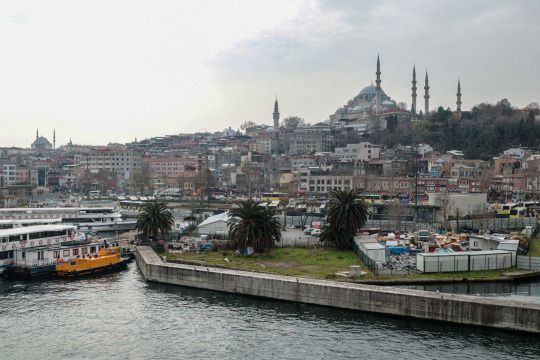
Step into a world where East meets West, where ancient history intertwines with vibrant culture, and where the heartbeat of a city echoes through time. Welcome to the Historic Areas of Istanbul, a UNESCO World Heritage Site that beckons travelers to immerse themselves in the rich tapestry of Turkey's most iconic city.
Nestled on the crossroads of continents, Istanbul boasts a legacy that spans millennia. From the grandeur of the Hagia Sophia to the intricate beauty of the Blue Mosque, every corner of the city tells a story of empires risen and fallen, of conquests and triumphs, and of a cultural heritage that knows no bounds.
Marvel at the architectural marvel that is the Hagia Sophia, a symbol of Istanbul's enduring spirit and resilience. Originally built as a Byzantine cathedral in the 6th century, this iconic structure later served as a mosque during the Ottoman era before being transformed into a museum in the 20th century. Today, its awe-inspiring domes and exquisite mosaics continue to captivate visitors from around the world.

Discover the breathtaking beauty of the Sultan Ahmed Mosque, affectionately known as the Blue Mosque for its stunning blue tiles adorning its interior walls. Built in the early 17th century, this architectural masterpiece stands as a testament to the glory of the Ottoman Empire and remains an active place of worship to this day.
Lose yourself in the labyrinthine alleyways of the Grand Bazaar, where the sights, sounds, and scents of Turkey come alive in a bustling marketplace like no other. From vibrant textiles and intricate carpets to fragrant spices and glittering jewelry, this vibrant bazaar offers a sensory journey through centuries of trade and tradition.
Step into the opulent world of the Ottoman sultans at the Topkapi Palace, where history comes to life amidst lavish courtyards, ornate chambers, and priceless treasures. Wander through the Harem, stroll through the Imperial Gardens, and marvel at the dazzling collections housed within its museum walls.
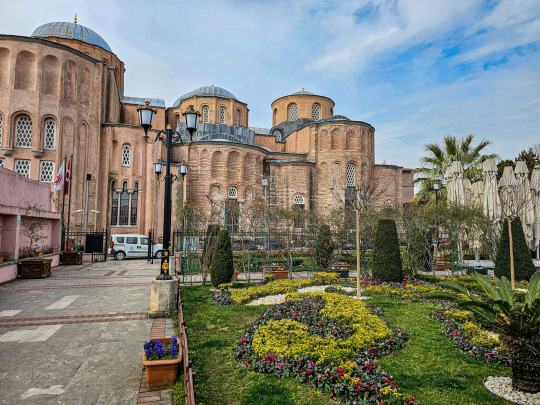
Explore the winding streets of Istanbul's historic neighborhoods, where Byzantine, Ottoman, and modern influences converge to create a vibrant tapestry of culture and heritage. From the cobbled lanes of Sultanahmet to the bustling markets of Eminonu, each corner of the city offers a glimpse into Istanbul's rich and diverse past.
Embark on a journey through time and tradition in the historic areas of Istanbul, where every step reveals a new layer of history, culture, and beauty. Whether you're drawn to the city's iconic landmarks, its vibrant street life, or its rich culinary heritage, Istanbul promises an unforgettable adventure that will linger in your heart long after you've said farewell.🇹🇷🕌🚢
#unesco#istanbul#world heritage#city#historic#travel#culture#asia#turkey#architecture#historical#town
0 notes
Text
Istanbul Turkey
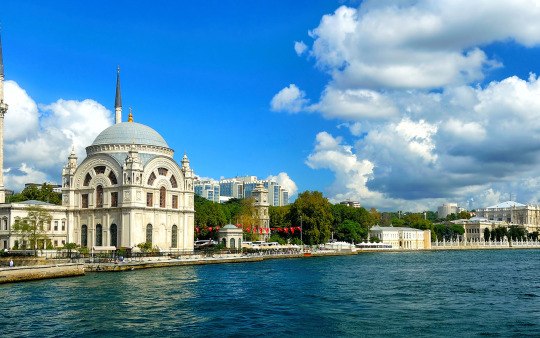
Istanbul, a city that spans two continents, is the perfect blend of old and new. Formerly known as Constantinople, this ancient city boasts of over 2,500 years of history and has been the capital of three empires, the Roman, Byzantine, and Ottoman. It is a melting pot of cultures, religions, and traditions, which makes it a fascinating and unique destination for travelers.
Located in the heart of Turkey, Istanbul is a bustling city that sits on the crossroads between Europe and Asia. It's a vibrant city that offers a wealth of attractions, rich in history, culture, art, and music. Istanbul is also known for its delicious cuisine, friendly locals, and amazing architecture.
Getting There
Istanbul's Ataturk International Airport is the primary gateway for visitors coming from the US and Europe. From the airport, you can take the metro, bus, or taxi to get to your destination. The metro is the cheapest option, and it serves many parts of the city. The bus is another affordable option that connects the airport to the city's far-reaching neighborhoods, while taxis are the most convenient, though slightly more expensive.
Where to Stay
Istanbul is home to a wide range of accommodations, from luxury hotels to budget-friendly guesthouses. The most popular areas to stay in Istanbul are Sultanahmet and Taksim Square. Sultanahmet is the heart of Istanbul's Old City, home to several ancient landmarks such as the Blue Mosque, Topkapi Palace and the Hagia Sophia. Taksim Square is at the heart of Istanbul's modern city and is a hub for business, entertainment, and shopping. Regardless of where you choose to stay, it is essential to book your accommodation in advance, especially during peak tourist season.
What to See and Do
Istanbul is a city of contrasts, where ancient meets modern. It is a city that never sleeps, with something to offer everyone, from the history buff to the foodie. Here are some top sights and activities to add to your itinerary.
Explore the Blue Mosque
The Blue Mosque, or Sultan Ahmed Mosque, is one of Istanbul's most iconic landmarks. This beautiful mosque, built-in 1616, is renowned for its six minarets, and its interior is adorned with over 20,000 hand-painted blue tiles. It is a must-visit attraction for anyone interested in Islamic art and architecture. Visitors must dress modestly when visiting the mosque, and women are required to cover their heads.
Discover the Hagia Sophia Museum
The Hagia Sophia, which means "Holy Wisdom" in Greek, is a former Byzantine church, turned mosque, turned museum. It was the largest church in the world for 1,000 years before being converted into a mosque, and later a museum. The Hagia Sophia is famous for its unique blend of Christian and Islamic art and architecture, which includes stunning mosaics, domes, and frescoes. The museum is open every day except Monday.
Experience the Grand Bazaar
The Grand Bazaar is one of the oldest and largest covered markets in the world, with more than 4,000 shops selling everything from Turkish textiles, jewelry, and spices to food, ceramics, and souvenirs. It is a maze-like bazaar with dozens of alleys and streets, which can take days to explore fully. Be prepared to haggle with vendors, as it is a longstanding tradition in the bazaar.
Take a Bosphorus Cruise
The Bosphorus Strait is the body of water that separates Asia from Europe and is a breathtaking sight to behold. A Bosphorus cruise is a great way to see the city's stunning skyline from the water, taking in sights such as the iconic Maiden's Tower, the Bosphorus Bridge, and the Dolmabahçe Palace. Cruises can be booked at the Eminonu Pier or Kabatas Pier.
Visit the Topkapi Palace
The Topkapi Palace was the residence of the Ottoman sultans for almost 400 years and is now a museum. The palace is home to several stunning courtyards, gardens, and buildings, including the Harem, where the sultan's wives lived. The Palace Museum is open every day except Tuesday.
Try Turkish Cuisine
Istanbul is famous for its delicious and diverse cuisine, which is a fusion of European and Middle Eastern flavors. Some of the must-try dishes include the doner kebab, a Turkish street food that consists of grilled meat and vegetables wrapped in pita bread; Turkish mezze, a selection of small dishes that are perfect for sharing; and baklava, a sweet pastry made of layers of dough, nuts, and honey syrup. For a unique Turkish experience, consider taking a food tour.
Practice Hamam Rituals
The hamam, or Turkish bath, is an essential cultural experience in Istanbul. The hamam ritual is a cleansing and relaxing experience that dates back to Ottoman times, and it involves a series of steam rooms, saunas, and massages.
0 notes
Text
Buy Apartment in Istanbul
Istanbul is Turkey's cultural, historical and economic capital. Being a crossroad of western and eastern countries, Buy Apartment in Istanbul having a transcontinental position and being the imperial capital for Roman and Ottoman empires granted a worldwide fame and historical treasure. Every civilization left marks of their culture and lifestyle. It are often seen on architecture, music and even on food.
First settlements were established on the ecu side of Istanbul. To be specific, the Historical Peninsula was the place that Thracian tribes and afterward Greeks settled and named as Byzantion. it's covered by the Golden Horn, the Bosphorus and therefore the Sea of Marmara. The magnificence and wonder of the Historical Peninsula are often seen perfectly from Galata Tower, which is found in Beyoglu area. the primary thing which will attract your attention is Topkapi Palace. it had been the royal residence of the Ottoman Sultans for 400 years. Sultan Mehmet II ordered the development of an excellent palace after conquering Constantinople and Ottoman architects planned and built Topkapi Palace in 13 years. Other great architectural structures that you simply could be amazed by watching are Blue Mosque, Süleymaniye Mosque and Hagia Sophia. Being almost these great structures will allow you to feel the history and if want to experience the good history of Istanbul you ought to search for residences purchasable in Istanbul.
The Historical Peninsula now contains two municipalities: Fatih and Eminönü. These two areas are considered the middle of trade, education and social meetings in Istanbul during Ottoman Empire era. The Grand Bazaar was the trade center and it's located in Fatih district. In 2014, 91 million tourists visited the Grand Bazaar and listed no 1 among world's most visited tourist attractions. it's one among the oldest covered markets within the world and it covers 30.000 meter square area with 66 streets and 4000 markets. it's a requirement to go to and obtain lost within the streets of the Bazaar and make certain that you simply will find some interesting and useful things to shop for .
Eminönü district are going to be your most visited place in Istanbul. Beyond the historical value that comes from bazaars and mosques, it's an area where good restaurants, cafes and a few local road tastes are often found. Eminonu is additionally where you'll take beautiful Bosphorus tours which will certainly satisfy you. Istanbul offers both history and amusement together. If you accept what Istanbul offers, you ought to search for buying apartment in Istanbul.
Century21 Sinerji has been offering its wide services within the Turkish land Market since 2011 at the guts of Istanbul. Within the last 10 years, we've proudly served quite 5000 customers from 20+ different countries.
1 note
·
View note
Text
Things To Do In Eminönü, Sultanahmet
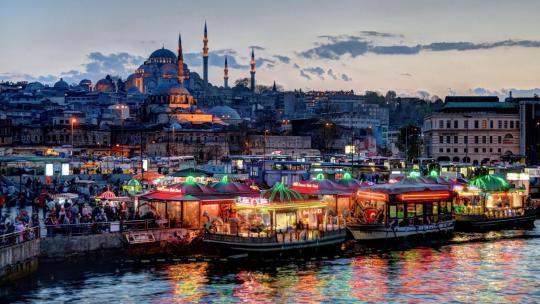
Eminonu is a perfect place to get a feel for the real Istanbul visit because it represents more than just tourism. This big transportation center provides glimpses into Istanbul spots' everyday views. Sitting on a bench and watching people go about their daily lives transports you to another world that no travel magazine could ever define.
Eminonu is part of the Fatih district, one of Istanbul's 39 official districts. Its claim the fame of being seen in three major films: Skyfall, Argo and Taken 2, since it was the heart of old Constantinople during the Byzantium era. Its strategic position, close to the Golden Horn and the Bosphorus entrance, was and continues to be important.
Merchants from all over the world sold their wares here by the 12th century, making it a crucial sea trading port. Despite the fact that the building of important landmarks such as Galata Bridge and the 19th century Sirkeci Train Station altered everyday dynamics, ordinary citizens continue to use the streets in large numbers. Visit Istanbul today to see everything Eminonu has to offer.
It is also home to a major university, Turkey's largest market, and other stores, offices, and government buildings, resulting in figures of 2 million people moving through every day.
Eat Grilled Fish in Galata
The floating boats next to Galata in Istanbul have always been a common place to eat in Eminonu. Everyone, when they visit Eminonu, is enthralled by this time-honored tradition, and pictures of the floating restaurants often appear in travel magazines. Serving balik ekmek, or fish, onions, tomatoes, and lettuce in bread, is an inexpensive, tasty, and popular Istanbul street food choice.
Watch the Mesmerizing Dervish Show
During your Istanbul trip, you definitely should see a whirling dervish show. Followers of the Sufi sect of Islam, they circle non-stop in order to be one with God. Since they perform every day at 7 p.m. for 60 minutes, the Hodjapasha cultural center often sells out of tickets in Istanbul well in advance. Rhythm of the Dance and White Rose are two other shows that blend traditional village dances, Ottoman harem shows, and contemporary choreography.
Take a Ferry Ride
Eminonu is a ferry port that locals and visitors use to fly to other spots in Istanbul, such as Besiktas, Ortakoy, and other small villages. On weekends, the locals flock to the Princes' Islands, a group of small landmasses off the coast of Asia. Discover old Ottoman mansions on traffic-free streets, some of which will sell for millions of pounds. Another common activity is to purchase a cheap ferry ticket for a Bosphorus cruise and ride along the river to see landmarks such as castles and old Yali mansions.
Egyptian Bazaar
Next to the mosques in Istanbul, you can find many bazaars. One of them is the 17th century Egyptian Spice Bazaar, where you can buy souvenirs and practice bartering. All is wowed by the ceiling's beautiful and vibrant architecture. While it was once part of the Yeni Mosque complex, it now stands proudly as a separate tourist attraction. Spice and herb aromas pervade the air on a daily basis. Turkish delight, chocolate, and kitchen condiments are among the other items for sale, and they make a special gift for loved ones back home.
Grand Bazaar
Prepare to get lost in Turkey's largest and oldest covered market, the Grand Bazaar, but that's part of the fun. Thousands of shops sell souvenirs such as Turkish carpets, coffee, trinkets, lamps, and ceramics inside a vast labyrinth of narrow passageways. Remember to have a bargain on prices, though! You can find cheap and beautiful items in this gorgeous bazaar in Eminonu
Suleymaniye Mosque
A 15-minute walk from Rustem Pasha is an ideal alternative. The Suleymaniye Mosque, built in the 16th century, is located on Istanbul's third hill, one of seven that the city was built around. Its massive scale dominates the landscape as another colonial Ottoman place of worship, and credit for this architectural masterpiece goes to Mimar Sinan once again. The interior's use of natural light emphasizes the inherent décor, making this a must-see destination.
https://www.iamistanbul.com/things-to-do-in-eminonu-sultanahmet
0 notes
Photo

#Istanbul No.195 // Süleymaniye Mosque. Perched on the Third Hill of Istanbul, with a sweeping vantage across the Bosphorus, Süleymaniye Mosque is the pinnacle of Ottomon architecture by the architect Mimar Sinan, and named after Suleiman the Magnificent, the Sultan the presided over the golden age of the Ottoman Empire. // // #Constantinople #Turkey #Fatih #Eminonu // #igersistanbul #ig_turkey @goturkey #goturkey #visitistanbul #visitturkey #travelturkey #turkey_home #lovestanbul_ @istanbul #Traveller #Explorer #Photographer #ContentCreator #Travel #Travels #Wanderlust #vsco #vscotravel #igworldclub #igtravel #tlasia #inspirationcultmag #culture #sonyalpha6600 #SonyAlpha (at Süleymaniye Camii) https://www.instagram.com/p/CCajL6lpmDg/?igshid=nwonwyqfi0f9
#istanbul#constantinople#turkey#fatih#eminonu#igersistanbul#ig_turkey#goturkey#visitistanbul#visitturkey#travelturkey#turkey_home#lovestanbul_#traveller#explorer#photographer#contentcreator#travel#travels#wanderlust#vsco#vscotravel#igworldclub#igtravel#tlasia#inspirationcultmag#culture#sonyalpha6600#sonyalpha
0 notes
Text
How to Spend a Day in Fener and Balat, Istanbul
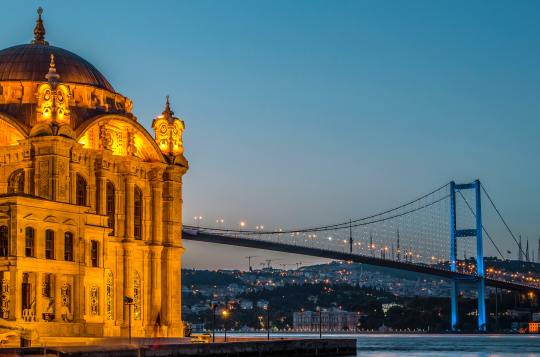
On my most up-to-date trip to Istanbul, Turkey, I did a walking tour focused on hidden architectural gems in Karakoy and Taksim. One among the opposite travelers on my tour was curious about knowing more about the city’s Jewish history, and our guide recommended that she spend a day exploring Fener and Balat (which he mentioned as simply “Fener Balat”), a colorful neighborhood with an upscale, multicultural history and a fast-growing cool factor. Well, that sounded right up my alley too, so I decided to form the trip to Fener and Balat the subsequent day.
It’s hard to draw a politician border between the 2 small neighborhoods of Fener and Balat so that they are often spoken of as one unit. Although the world has been occupied since the Byzantine Empire, Fener and Balat came into their own when the Ottoman Empire took control of Istanbul and lots of the city’s Greek residents built traditional wooden houses in these communities, followed years later by the arrival of the many Jews and Muslims from Spain. Elements of all of the cultures remain today within the sort of religious buildings, educational institutions, residences, cuisine, and art… which makes Fener and Balat a serious draw for travelers trying to find something different in Istanbul.
I spent about four hours in Fener and Balat and would recommend that you simply decide to stay for a minimum of that long (especially if you would like to eat in one among the district’s hottest restaurants). As I mention within the transportation section below, attempt to time your visit to avoid rush-hour traffic, perhaps visiting from 10:00 to 15:00, so that you don’t spend an hour (or longer) making the seven-kilometer bus trip from the Galata Bridge.
Things to try to to in Fener & Balat
Find Istanbul’s Most Colorful Houses
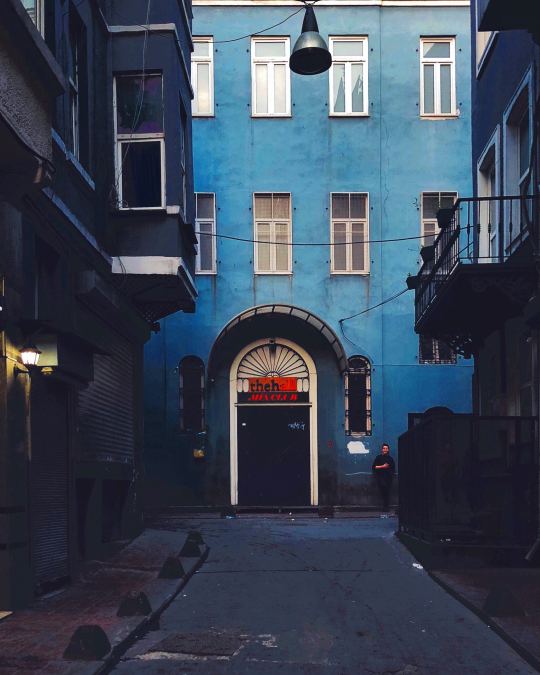
Most people come to Fener and Balat to see the rows of colorful houses dotted throughout both neighborhoods. While a number of the more famous streets (like the hilly Merdivenli Yokus) can get crowded with Instagrammers and amateur photographers, you'll still find colorful side streets with few crowds (like the one I snapped above). Many of the homes have had their facades refreshed with the support of UNESCO, which recognizes all of Fatih as a neighborhood of cultural significance.
See the Historic Architecture
It’s a brief walk up a steep hill to Phanar Orthodox College, a monolithic red-brick building that houses Istanbul’s oldest Greek-Orthodox school. Although a faculty has been on the location since the 1400s, the building you'll see today was inbuilt the 1880s. Inside, students still study a balanced curriculum that has the Turkish national curriculum and along with side key subjects in Greek also.
You might also want to see out Kadir Has University, one among Istanbul’s newest universities. The university’s building was originally an old tobacco factory, and therefore the reconstruction work won a gift for architectural beauty from the multinational NGO Europa Nostra.
Visit a spiritual Site
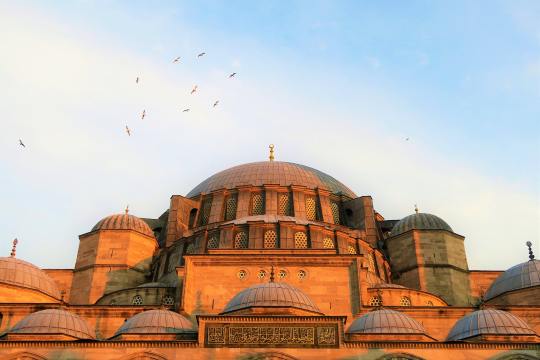
Fener and Balat are both full of houses of worship spanning centuries and faiths. I used to be taken by St. Stephen Bulgarian Church, shown above, with its unique cast-iron facade. St. Stephen’s undergone an extended renovation and reopened in 2018, so visit while it’s still in great condition.
You can also visit the Ahrida Synagogue, but to pass beyond its red gate you'll be got to arrange entrance beforehand, for security purposes. Similarly, to enter the Gul Mosque, which was inbuilt the eleventh century because of the Saint Theodosia Church, you'll need to hunt the groundskeeper and convince him to allow you to the inside, which I’ve read isn't a simple feat.
Although some blogs mention Saint Mary of the Mongols Church, it’s located behind a reasonably big wall and infrequently hospitable the general public. Don’t leave of your way for this one.
Browse for Antiques & Curiosities
It’s impossible to steer quite two or three blocks in Fener and Balat without encountering the community’s famous antique shops, full of everything from second-hand trinkets to legitimately valuable antiques. However, I used to be more curious about a number of the opposite shops I found, just like the Electrician of Havana shop where antique electrical items like lamps and telephones are converted into contemporary art, and Balat Bahce, where they sell quite fifty different sorts of homemade jams, jellies, and spreads, mostly featuring local and seasonal ingredients.
Scope Out the road Art
Again, follow the Instagrammers and you'll be led to Balat and Fener’s most evocative pieces of street art, including murals of mysterious portraits, perfume bottle grenades, random acts of automobiles and, yes, your standard graffiti. If you would like to ascertain art off the road, pop into The Pill Contemporary gallery, which was closed thanks to a change of exhibits once I visited, but that often features exhibitions of up-and-coming Turkish and international artists.
Where to dine in Fener & Balat

Cook life Balat
Out of all the restaurants in Fener and Balat, I used to be most drawn to Cook life Balat for my brunch during this Istanbul neighborhood. An adorable corner cafe travel by the team behind Cook life culinary magazine, the main target here is on fresh, local ingredients sourced from the owners’ farm outside Istanbul. I had their spectacular Turkish breakfast for one, shown above, featuring homemade bread, jams and spreads, salad, olives, cheese, butter, nuts and more.
Forno Balat
I also considered eating at Forno Balat because I could see it had a stimulating menu of Turkish flatbread pizzas, including some vegetarian options, plus soups, salads and homemade desserts. If you’re in Fener and Balat on the weekend, Forno also serves a weekend buffet brunch.
Mitis Manti ve Cafe
This was my backup-backup just in case I couldn’t get a seat at either Cook's life or Forno. With a more traditional vibe, this small restaurant focuses on manti or Turkish dumplings that they had two different vegetarian options (potato or mushroom) and three meaty options, all of which accompany a liberal covering of special yogurt-based sauce and a drizzle of their secret manti sauce.
Brew Coffeeworks
When I mentioned I’d been in Fener and Balat, one among my readers asked if I’d been to Brew Coffeeworks. Consistent with them, it's the simplest coffee altogether of Istanbul, so I used to be disappointed to possess missed it. Stop by when you’re in Fener and Balat, then come and let me know if it is that the best coffee altogether of Istanbul!
How to Get to Fener & Balat
Fener and Balat are located in Fatih, on the ECU side of Istanbul and northwest of Eminonu. To urge to Fener and Balat from Eminonu, walk to the bus exchange that's labeled “Eminönü (Turyol)” on Google Maps (zoom in and you'll see four small lanes of bus stops) and mountboard one among the frequent buses traveling northwest along Abdulezelpasa Caddesi. If you’re bad at remembering bus numbers, it’s easiest to recollect 99, 99A or 99Y, all of which can take you to Fener and Balat. Traffic moves at a snail’s pace at hour, so attempt to time your visit to avoid the push of drivers getting to, or leaving, work.
Hotels in Fener & Balat
I didn’t stay in Fener and Balat and that I don’t necessarily recommend that you simply stay here. As it’s only accessible by bus, with no subway or tram service, it is often time-consuming to succeed in other areas of the town from here. However, if you would like to base yourself in Fener and Balat because you’re within the neighborhood for private reasons or work, you'll check out Hotel Troya Balat, which is found during a nineteenth-century historical building on the near side of the district, or Balat Residence for a standard, family-run hotel with self-contained apartment units.
Istanbul is one of my favorite cities on the earth, and I’ve already planted the seeds for a return visit (my third!) next summer, but this point with my mom as my travel companion! I can’t wait to introduce her to everything from Cook's life Balat’s beautiful brunch to the traditional sights of Sultanahmet.
0 notes
Text
Rustem Pasha Mosque: Grand Vizier's Mosque
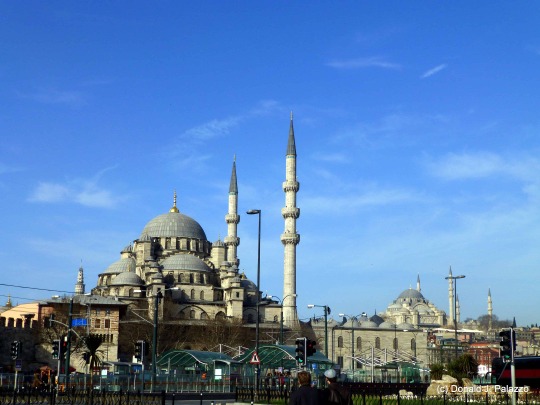
Rustem Pasha Mosque is located within the heart of the historical peninsula of Istanbul and built by Architect Sinan in 1561. If you go to the Eminonu you will see the Rustem Pasha Mosque just in front of the Galata Bridge and the ferry stops by the Golden Horn. This mosque is not one of the biggest mosques in Istanbul but it has its own unique properties that make it worth sparing some time and visiting.

Rustem Pasha Mosque from the Galata Bridge. Bigger Mosque in the back is the Suleymaniye Mosque (Source).
History of Rustem Pasha Mosque
Rustem Pasha Mosque is built by the great Ottoman Artictech Mimar Sinan between 1550 and 1561. Construction order of the mosque given by the Rustem Pasha who was a Grand Vizier and son in law of the Ottoman Sultan Suleyman the Magnificent. Mimar Sinan also built the Sulmaniye Mosque which is very close to the Rustem Pasha Mosque. This mosque famous between Turkish citizens and tourists because of its Iznik (Nicea) tiles of the 16th century. Entire walls, mihrab, and mimbar of the mosque is all covered with these incredible tiles and they are still standing. Also, the mosque has one single minaret and a central dome with 4 more semi-domes. These domes are covered with 74 windows. Semi-domes and arches of the mosque are supporting by the octagonal columns. In Turkish these columns named "Fil Ayağı", elephant feet.
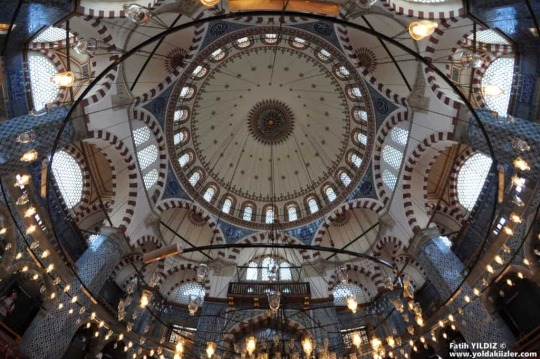
Interior of the mosque, main dome, and Iznik tiles (Source).
Renovations of the Mosque
Rustem Pasha Mosque was partly damaged at the Great Fire of 1666 and also 1776 earthquake. After two disasters, it quickly repaired and renovated by the Ottoman Sultans. Istanbul have lots of beautiful, exciting and big mosques but the Rustem Pasha Mosque should be on the top of that list despite its small size. As soon as you enter the mosque it's like entering another world. Incredible Iznik tiles, detailed architecture and feel of the spiritual life of Islam and Muslims.
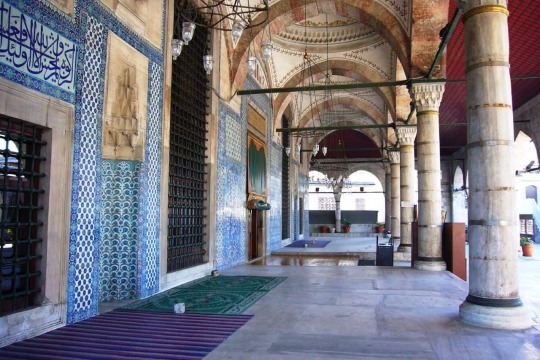
Iznik tiles will welcome you at the entrance (Source).
Where is Rustem Pasha Mosque?
As I told you before it is very close to the Eminonu side of the Galata Bridge. Even while you are walking from Karakoy to Eminonu through the Galata Bridge you can see the mosque. Because of its central location, it is very easy to go to the mosque. At first, you should go to the Eminonu, of course, it depends where will you go from to it.
How to Go to the Rustem Pasha Mosque from Sultanahmet?
The easiest way to take the T1 tram line from Sultanahmet station and get off at the Eminonu station, just 2 stations after. The mosque is just around 200 meters away from the tram station. But I'm strongly suggesting you take a walk from the Sultanahmet. Taking a walk will take around half an hour and 2 km but the route offers most of the historical legacy of Istanbul to you. While you are walking you can see the Firuz Aga Mosque, Nuruosmaniye Mosque, Historical Cuhaci Han, Grand Bazaar and many more other places.
How to Go to the Rustem Pasha Mosque from Taksim?
If you want to go to the mosque from Taksim you can take the historical metro which name is Tünel from Beyoglu. It is like a funicular system with one-stop. You can get off at the Karakoy, just another side of the Golden Horne. It is possible to take a T1 tram line from Karakoy Station and get off only after one station, at Eminonu. But it is always better to take a walk through the Galata Bridge. While you are walking you can see the many landmarks at the historical peninsula of Istanbul. Also, you can stop over the bridge and watch the people who are fishing. Don't forget to take pictures!
How to Go to the Rustem Pasha Mosque from Kadıköy and Uskudar?
You have one great option to go to the Eminonu from Kadıkoy and Uskudar. Just take a ferry from Kadıkoy or Uskudar pier and get off at the Eminonu. This is a classical Istanbul way to go to the Eminonu. While on the ferry don't forget to eat simit (a Turkish bagel) and dring tea. Feeding the seagulls with your simit is a traditional Turkish habit. After you get off at the Eminonu pier just take a 200 meters long walk to the mosque.
Rustem Pasha Mosque Opening Hours
Rustem Pasha Mosque is not a museum. It is an active religious place open to all people. It will be open in the morning prayer at the sunrise and will close after the night prayer. You can visit it any time during the day but also be aware that the entrance to the mosque will be restricted during the prayer. Generally, prayer will take no more than 20 minutes except only the Friday prayer. Fridays, at the noon there is a prayer and mosque will be crowded. It will take up to an hour. So you can eat a meal or drink coffee to spend some time to visit the mosque. Also, there is no entrance fee to the mosque but if you want to make some donations, it will be accepted by the officials. Probably one or two hours will be enough to visit the mosque and inspect the Iznik tiles in detail.
If you visited Rustem Pasha Mosque or planning to visit it please share your thought, questions, and suggestion at the comment section to help the others.
Read the full article
0 notes
Photo
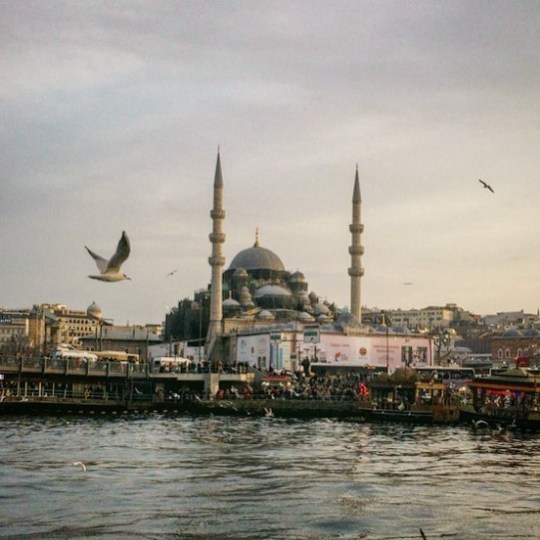
Yeni Camii, Новая Мечеть #eminonu #istanbul #camii #mosque #mycity #life #travel #istanbul #turkey #love #architecture #culture (at Tarihi Eminönü Balık Ekmek)
0 notes
Text
Uskudar: the district of luxury real estate

Extending her hand to the Bosphorus, correcting her view of the sea blue and embracing the magic of nature, Uskudar falls asleep, the jewel of Istanbul and the pearl of the Asian continent since the seventh century AD after its construction by the Greeks who called it the "Golden City", a label that historians differed later on about its cause between who went until he sang The city in ancient times with gold mines behind this name and between those who suggested that the reflection of sunlight on its homes that turn golden in time of sunset is behind the name "golden city".
Not only did the attention of Uskudar stop with the Greeks, but the sultans of the Ottoman Empire devoted a large portion of their urban plans to them, building a wonderful palace on the banks of the Bosphorus to enjoy its views and the beauty of the surrounding nature and the forests near the strait.
With regard to the administrative division of Uskudar, it witnessed a great organization at the end of the Ottoman Empire between 1918 and 1924, but later it turned into an independent municipality in its own right in 1936, i.e. 12 years after the founding of the Turkish Republic. Tourist and economy.
Uskudar .. location and population
The Uskudar region is located on the Asian side of Istanbul, bordered to the east by the famous “Umraniye” neighborhood and to the west by the Bosphorus Strait, which overlooks the most prestigious and important neighborhoods of the European section of Istanbul, such as Besiktas, Beyoglu, Eminonu, and South. Uskudar borders the cities of Kadikoy and Ataşehir.
Uskudar, which has an area of 58 square kilometers and a population of 600,000 people, contains about 35 neighborhoods and villages, while rural areas represent 35 square kilometers of its total area.
Uskudar: infrastructure and transportation
Uskudar is included in the list of the most important waterfronts in Istanbul and a tourist area par excellence due to the fact that it contains many vital projects that made life in it well in addition to service facilities and solid infrastructure and a strong transportation network in the forefront:
· Universities and schools, which includes a large number of private universities, most notably the Endowment Private University of Uskudar, Marmara University and 18 other universities in all disciplines, especially scientific ones, in addition to government, private and international schools along the lines of the American School Istanbul International.
· The 17 hospitals vary between government and private equipped with the latest therapeutic techniques in all areas, most notably anesthesia, food, internal and dermatology, general and specialized surgery, pediatric and neurology in addition to sophisticated analysis laboratories that are intended for Turks from everywhere and foreigners who come specifically for medication in Uskudar hospitals and their specialized health centers in Plastic surgery, dentistry and hair transplantation.
· Uskudar port, which is one of the most important ports of Istanbul, is equipped with the best entertainment services, as it contains a large number of ships and ferries for transporting people and goods between the European and Asian parties through the Bosphorus Strait.
· Various modes of transportation between the metro connects it to the European side, the Marmaray Line, buses for transportation, taxis and water ferries.
Uskudar: multidimensional tourism
Uskudar is considered one of the most attractive areas in Istanbul for Turkish tourists and foreigners alike, as thousands come to it every year and in all seasons due to its many attractions and tourist facilities extending from ancient history to the present including:
· The popular markets that the wanderer enjoys in Uskudar are very close to Arab culture, such as Baghdad Street, which is similar to Istiklal Street, by dividing where many Arab investors are competing to buy real estate near it, especially as it was a house of the upper class in the Ottoman era.
· Luxury commercial centers where Uskudar includes about 15 "malls", the most famous of which is the "Via Port Mall", which has gained its importance because of its proximity to Sabiha Airport and the "Crowne Plaza Hotel", as well as its offer to many Turkish and international brands and to meet the requirements and needs of customers through high-end services, it is provided with a lake and a triple cinema Dimensions, children's theme park, bowling alley, luxury restaurants and cafes.
· The Camlica Mosque, which was officially delivered in 2019 with a purely Ottoman architectural style, is located on the highest summit in Istanbul, "Puppet Hill", allowing its visitors to enjoy a panoramic view of the most beautiful and important areas of Istanbul, Europe and Asia, in addition to containing a wonderful garden and museum of Islamic monuments and an exhibition of fine art.
· The girl's tower, which was built on an industrial island 200 meters away from the coast of Uskudar, where concerts are held alongside luxurious restaurants serving the most delicious traditional and modern Turkish dishes.
· Princesses island or the red islands, which are famous for tourism, where visitors come from all sides to enjoy the tranquility of nature away from the hustle and bustle of cities.
Uskudar: strong real estate investment
Uskudar is classified as one of the best real estate investment areas in Asian Istanbul, and thinking about "buying a property in Uskudar" is one of the best things that wanting to own property in turkey , Istanbul, as he finds himself in front of many options, whether by buying luxury villas close to the Bosphorus or buying apartments in residential complexes. Modern or ordinary apartments in high places, and those looking for ways to double their wealth can buy student or tourist residences in order to re-rent them and generate imaginary profits, as confirmed by the experiences of previous investors.
0 notes
Text
The photographs that Aydin Buyuktas, a photographer from Ankara, presents in the fields of visual effect, 3D, animation and video, tell us an unfamiliar story of Istanbul. Buyuktas’ photograph series titled “Flatland” allows us to see the places we are familiar with from different perspectives and to commit the city to our memories all over again in simplicity we haven’t experienced before.
Buyuktas, who created his photographic work “Flatland” inspired by Edwin Abbott’s book “Flatland: A Romance of Many Dimensions”, underlines that reality is not limited to our perceptions and prompts the audience to think through different perspectives. The artist, who managed to show the existing things in a different way through manipulation in perception while avoiding the manipulation in photography, started to focus on freelance works after his 3D designs gained international reputation in 2008. We talked to Buyuktas, who continues to increase his international fame with his works that combine technology and art, about the digital art works that we encounter more frequently with each passing day and how technology interacts with art.
Can you briefly tell our readers about yourself?
I was born in 1972 in Ankara. I spent my childhood in Ankara, but we moved to Alanya when I started primary school. I returned to Ankara during my university years. I left Bilkent University Department of Tourism Management because it was not among my dreams. In 2000, I moved to Istanbul to work on fine arts such as graphics, cinema, animation, which was my childhood dream.
You have many works in visual effect, 3D, animation and video. When and how did you begin to have interest in this field?
I spent my childhood and youth reading science fiction series by science fiction writers such as Isaac Asimov and H.G. Wells and Science and Technology magazines. These books allowed me to question issues like wormholes, black holes, parallel universes, gravitation, bending of space and time. I think it was in 2006 when I read Michio Kaku’s book “Hyperspace”. Kaku used examples from Edwin Abbott’s book “Flatland: A Romance of Many Dimensions” when he wrote about the fourth dimension. I was very impressed by the way in which the book, written in 1884, depicts in simple examples how dimensions are interconnected and the difficulties in perceiving the transition between dimensions. My questioning about the third dimension matched up with the book’s effort to explain the transition between dimensions and the third dimension in the second dimension. Since the childhood, I have been interested in visual effects and animation in the 2000s on the idea of realizing the surreal spaces I dreamed and dreamed of. Following the idea of realizing the surreal spaces I have dreamed since my childhood, I began to engage with visual effects and animation in the 2000s. I started to focus on freelance works after the 3D characters I designed gained international reputation in 2008.
About Multidimensionality
Your works inspired by Edwin Abbott’s “Flatland: A Romance of Many Dimensions” draws great interest in the international arena. Could you create the effect that you have desired?
I’ve succeeded more than I thought. I try to present the spaces we live in, which mostly do not even catch our attention and which form our memories, by transforming them and adding different dimensions.
Desert Railroad, Willcox-Arizona
Bridge, San Saba-Texas
Kurbaglidere River Kadikoy-Istanbul
Grandbazaar, Fatih-Istanbul
Sultanahmet Square Fatih-Istanbul
Skate Park, Maltepe-Istanbul
Red Road Nipton-California
Edwin Abbotts Flatland
You provide us with a bird’s eye view of cities. What effect does it have on you?
I think this perspective provides a different perception and questioning for the spaces in our daily lives. In this way; I target a more romantic point of view by destroying the general perceptions of space in our memory that often do not even draw our attention. Rather than creating space in space, my aim is to present the existing things in a different way with some Dadaist and some Cubist logic.
Aside from the romantic part, there is also a technical aspect of the work. You combine the normal shots of the photos you take with drone in the same frame. What would you like to say in more detail?
I worked on planning for about two months before I started photo shooting. I created cities in 3D. I’ve rendered thousands of frames by placing virtual cameras. The points where the photos will be taken, the slope I want and the points I would connect were all planned to the finest detail before the photo shooting. In this way, everything is solved during photo shooting and there is no need for manipulation. I calculated everything in such a depth that I can shoot with the film and print it in the dark room.
We can easily reach your work through social media. What kind of feedbacks you get?
I think social media creates a democratic environment. At least you don’t make yourself dependent only on people coming to a gallery. You have the opportunity to show your work worldwide. I can say that beyond gaining people’s appreciation, social media has a great benefit to my career.
Istanbul In Different Levels
Among your works that allow us to see Istanbul from a different point of view, which place has affected you most?
The “Grand Bazaar”, its architectural structure that is articulated and expands as a living organism, the sense of perspective, the color of the roofs and its composition impressed me as an artist. My work, which is composed of photographs of the world-known places such as Eminonu-New Mosque, Kadıkoy-Tuesday Market and Grand Bazaar, taken from different heights and angles with the help of drone (Flycam), invites to reconsider Istanbul. In fact, my aim in this series is related to the places where I dream about and the perception of texture and perspective I want to create, rather than a sensibility related to the city I live in.
Is there any information about the projects you plan to realize in the coming period?
There are a lot of projects I plan to carry out. There are so many series in my head that I am having trouble in which order I should realize them. First, I want to complete 180 degrees and 360 degrees in this series. I will continue my dreams with different series about photography, video and 3D supported science fiction.
NOTE
Edwin Abbott’s Flatland
Flatland by Edwin A. Abbott, a British cleric, educator, and Shakespeare scholar, is a science and mathematics fiction that has been able to impress readers for more than 100 years, an entertaining satire… Through a Square’s daily life in two-dimensional Flatland, we first learn how life is in two dimensions. This is a world with women, men, classes and rulers. Then we discover the line country, the space country, and the point country. Abbott realizes social classification via geometry while establishing the mathematics of life in Flatland. With this aspect, it shows the meaning it attributes to mathematics and also provides a formal classification of roles in the system.
By: Dilara Gülşah Azaplar / Photos: Aydın Büyüktaş
*This article was published in the July– August issue of Marmara Life.
Romance Of Different Dimensions The photographs that Aydin Buyuktas, a photographer from Ankara, presents in the fields of visual effect, 3D, animation and video, tell us an unfamiliar story of Istanbul.
0 notes
Text
Buy Apartment in Istanbul
Istanbul is Turkey's cultural, historical and economic capital. Being a crossroad of western and eastern countries, Buy Apartment in Istanbul having a transcontinental position and being the imperial capital for Roman and Ottoman empires granted a worldwide fame and historical treasure. Every civilization left marks of their culture and lifestyle. It are often seen on architecture, music and even on food.
First settlements were established on the ecu side of Istanbul. To be specific, the Historical Peninsula was the place that Thracian tribes and afterward Greeks settled and named as Byzantion. it's covered by the Golden Horn, the Bosphorus and therefore the Sea of Marmara. The magnificence and wonder of the Historical Peninsula are often seen perfectly from Galata Tower, which is found in Beyoglu area. the primary thing which will attract your attention is Topkapi Palace. it had been the royal residence of the Ottoman Sultans for 400 years. Sultan Mehmet II ordered the development of an excellent palace after conquering Constantinople and Ottoman architects planned and built Topkapi Palace in 13 years. Other great architectural structures that you simply could be amazed by watching are Blue Mosque, Süleymaniye Mosque and Hagia Sophia. Being almost these great structures will allow you to feel the history and if want to experience the good history of Istanbul you ought to search for residences purchasable in Istanbul.
The Historical Peninsula now contains two municipalities: Fatih and Eminönü. These two areas are considered the middle of trade, education and social meetings in Istanbul during Ottoman Empire era. The Grand Bazaar was the trade center and it's located in Fatih district. In 2014, 91 million tourists visited the Grand Bazaar and listed no 1 among world's most visited tourist attractions. it's one among the oldest covered markets within the world and it covers 30.000 meter square area with 66 streets and 4000 markets. it's a requirement to go to and obtain lost within the streets of the Bazaar and make certain that you simply will find some interesting and useful things to shop for .
Eminönü district are going to be your most visited place in Istanbul. Beyond the historical value that comes from bazaars and mosques, it's an area where good restaurants, cafes and a few local road tastes are often found. Eminonu is additionally where you'll take beautiful Bosphorus tours which will certainly satisfy you. Istanbul offers both history and amusement together. If you accept what Istanbul offers, you ought to search for buying apartment in Istanbul.
Century21 Sinerji has been offering its wide services within the Turkish land Market since 2011 at the guts of Istanbul. Within the last 10 years, we've proudly served quite 5000 customers from 20+ different countries.
0 notes
Text
Popular on 500px : Eminonu. Istanbul by mirarierdoiza city,tower,building exterior,architecture,famous place,Istanbul,Mosque,Boats,Bosphorus,Minaret,Eminonu mosque#haero #ttot #RTW #travel https://t.co/gkjFGDDPAR
Popular on 500px : Eminonu. Istanbul by mirarierdoiza city,tower,building exterior,architecture,famous place,Istanbul,Mosque,Boats,Bosphorus,Minaret,Eminonu mosque#haero #ttot #RTW #travel pic.twitter.com/gkjFGDDPAR
— AndOREAH Fabellini (@haerone) August 1, 2018
from Twitter https://twitter.com/haerone
View On WordPress
0 notes
Text
Text credits:
http://www.greatistanbul.com/nuruosmaniye_mosque.html
Nuruosmaniye Mosque in Istanbul
The construction of the Nuruosmaniye Mosque was started by Sultan Mahmud I in 1748 and completed by Sultan Osman III in 1755. It’s a typical Baroque and Rococo style mosque which was a very popular architecture of 1700’s within the Ottoman Empire. The mosque was built on one of the seven hills of Istanbul by a Greek minority architect named Simeon and Mustafa Aga.
The mosque has a semi-circular courtyard with no fountain for the ablutions but only taps today. There are two minarets each having two balconies. It has a single dome and no column within the prayer hall but raised on four large arches, having a diameter of 25 meters (82 feet) and the height of 43 meters (141 feet). There are many ornaments on its main walls, stone crescent on the minaret tops, stone work of the niche (Mihrab) and the pulpit (Minbar). On the east corner of the prayer hall there is the sultan’s lodge with latticework between its columns, accessed by a ramp outside the mosque. The existence of many windows provide lots of light but also justifying the name of the mosque: Nuruosmaniye means “The Light of Osman”. It also gave its name to the neighborhood.
The Nuruosmaniye Complex has a manuscript library as well with thousands of volumes containing also collections belonging to the sultans. This section is closed to the public except researchers with special permission. In the complex, there is also a medresse and a soup kitchen to the north, a mausoleum where Sultan Osman III’s mother (Sehsuvar Valide Sultan) is buried, and a public fountain.
The mosque is in Nuruosmaniye neighborhood near Eminonu, just next to the Grand Bazaar, to the northwest of the Cemberlitas column.
Español
Créditos de este texto:
https://planetaestambul.wordpress.com/2017/04/27/nuruosmaniye/
Publicado: abril 27, 2017
La Mezquita de Nuruosmaniye es uno de los templos más hermosos de Estambul, categoría alcanzada en gran parte por sus numerosas y logradas vidrieras que embellecen su interior a través de una soberbia y bien lograda luminosidad.
Nuruosmaniye, que en turco significa la luz de Osman, es uno de los templos islámicos más visibles y visitados del casco histórico de la ciudad, dado que goza de una ubicación única aledaña al Gran Bazar y a la Columna de Constantino.
Fue diseñada por los arquitectos Mustafa Ağa y Simon Kalfa e inaugurada en 1755 por el sultán Osman III, aunque la misma fue comisionada por Mahmut I en 1748, siendo considerada como una de las obras culmen del barroco otomano.
Nuruosmaniye sorprende por su aprovechamiento del espacio, de hecho ni siquiera cuenta con una tradicional fuente central para las abluciones, pero el templo exhibe porte y su cúpula se eleva hasta los 42 metros de altura, en una competición por alcanzar el cielo en la que se ve acompañado de 2 esplendidos alminares que suben hasta los 60 metros.oración, ya que Nuruosmaniye es uno de los epicentros de la Llamada al rezo, un lugar donde la polifonía coral de todo el entorno se concentra emocionando tanto a creyentes como ateos.
Además, Nuruosmaniye no solo constituye solo una mezquita, sino en el pasado configuraba un complejo más grande o Külliye, donde se ubicaba una madrasa, aulas y alojamientos para los alumnos, así como uno de las mejores bibliotecas de la ciudad que sigue existiendo en la actualidad y atesora documentos personales de los sultanes Mahmut I y Osman III.
En definitiva, la mezquita de Nuruosmaniye es una de las luces que hacen vibrar a los viajeros, un templo para soñadores, luz y arte para enamorarse para siempre de Estambul.
Nuruosmaniye Mosque, Istanbul….Mesquita Nuruosmaniye, Estambul Text credits: Nuruosmaniye Mosque in Istanbul The construction of the Nuruosmaniye Mosque was started by Sultan Mahmud I in 1748 and completed by Sultan Osman III in 1755.
#arquitectura otomana#Estambul#Istanbul#mezquita#Mezquita Nuruosmaniye#mosque#Nuruosmaniye Mosque#Ottoman architecture#Turkey#Turquía
0 notes
Text
Chora Church
The Church of the Holy Saviour in Chora is a medieval Byzantine Greek Orthodox church preserved as the Chora Museum in the Edirnekapı neighborhood of Istanbul.
Address: Dervişali Mahallesi, Kariye Cami Sk. No:8, 34087 Fatih/İstanbul, Turkey
Opened: 1958
Hours: Open 9AM–7PM “Except Wednesday”
Architectural style: Byzantine architecture
Phone: +90 212 631 92 41
Function: Museum
Map of Chora Church Istanbul
Photos of Chora Church Istanbul
Chora Museum Mosque Istanbul – Visit Istanbul
Chora Museum Mosque Istanbul – Visit Istanbul
Chora Museum Mosque Istanbul – Visit Istanbul
Chora Museum Mosque Istanbul – Visit Istanbul
Chora Museum Mosque Istanbul – Visit Istanbul
Chora Museum Mosque Istanbul – Visit Istanbul
Chora Museum Mosque Istanbul – Visit Istanbul
Chora Museum Mosque Istanbul – Visit Istanbul
Chora Museum Mosque Istanbul – Visit Istanbul
Chora Museum Mosque Istanbul – Visit Istanbul
Chora Museum Mosque Istanbul – Visit Istanbul
Chora Museum Mosque Istanbul – Visit Istanbul
Chora Museum Mosque Istanbul – Visit Istanbul
Chora Museum Mosque Istanbul – Visit Istanbul
Chora Museum Mosque Istanbul – Visit Istanbul
Chora Museum Mosque Istanbul – Visit Istanbul
Chora Museum Mosque Istanbul – Visit Istanbul
Chora Museum Mosque Istanbul – Visit Istanbul
Chora Museum Mosque Istanbul – Visit Istanbul
Chora Museum Mosque Istanbul – Visit Istanbul
Chora Museum Mosque Istanbul – Visit Istanbul
Chora Museum Mosque Istanbul – Visit Istanbul
Chora Museum Mosque Istanbul – Visit Istanbul
Chora Museum Mosque Istanbul – Visit Istanbul
Chora Museum Mosque Istanbul – Visit Istanbul
Chora Museum Mosque Istanbul – Visit Istanbul
Chora Museum Mosque Istanbul – Visit Istanbul
Chora Museum Mosque Istanbul – Visit Istanbul
Chora Museum Mosque Istanbul – Visit Istanbul
Chora Museum Mosque Istanbul – Visit Istanbul
Chora Museum Mosque Istanbul – Visit Istanbul
Chora Museum Mosque Istanbul – Visit Istanbul
Chora Museum Mosque Istanbul – Visit Istanbul
Chora Museum Mosque Istanbul – Visit Istanbul
Chora Museum Mosque Istanbul – Visit Istanbul
Chora Museum Mosque Istanbul – Visit Istanbul
ABOUT CHORA
The Turkish word Kariye is derived from the ancient Greek word Chora meaning outside of the city (land). It is known that there was a chapel outside of the city before the 5th century when the city walls were erected. The first Chora Church was rebuilt by Justinianus (527-565) in place of this chapel. In the era of Komnenoi, it served as the court chapel for important religious ceremonies, thanks to its nearness to the Palace of Blachernae.
Chora Church (Chora Kirke) was destroyed during the Latin invasion (1204-1261) and repaired in the reign of Andronikos II (1282-1328) by the Treasury Minister of the palace, Theodore Metochites (1313). It was expanded towards north, an exonarthex was added to its western side and a chapel (Parecclesion) to its southern side, and it was decorated with mosaics and frescoes.
The mosaics and frescoes in the Chora are the most beautiful examples dating from the last period of the Byzantine painting (14th century). The characteristic stylistic elements in those mosaics and frescoes are the depth, the movements and plastic values of figures and the elongation of figures.
After continuing to serve as a church following the conquest of Istanbul in 1453, the building was converted into a mosque in 1511 by Vizier Hadim Ali Pasha. It was converted into a museum in 1945, and during the restoration in 1948-1959 carried out by the Byzantine Institute of America, the mosaics and frescoes were uncovered and brought to the daylight.
DETAILS
Chora (Kariye) is situated inside the ramparts of Istanbul in Edirnekapi district. The word chora means outside the city, the countryside in ancient Greek.
Although there is no precise information about the construction date, it is known that there was previously a chapel here. Chora (Kariye) church / kirke was constructed along with the monastery in about 536 during the reign of emperor Justinian I (527-565). the church got damaged in the Iconoclastic period (726-842) and was restored at different times. The removal of the imperial dynasty to Blachernae Palace in the reign of the Comnenus dynasty (1081-1185), and the performance of some religious ceremonies in Kariye church, which was close to the Palace, considerably increased significance of the church. As a result, the mother-in-law of the emperor Alexius I )1081-1118) Maria Doucina took the derelict church under her protection and had it renovated. However, the church was pillaged during the Latin Invasion (1204-1261) and witnessed great destruction.
The golden age of the museum was during the reign of emperor Andronicus II Palaceologus (1282-1328). A great statesman, politician, scholar and man of letters, Theodoro Metochites had the church restored considerably. A corridor was added to the northern wing of the church, consisting of narthex and main floor, as well as a parecclesion, a narrow and long single-naves chapel adjacent to the southern face, and an exterior narthex running along the western face. The mosaics ornamenting the inner and outer narthexes, and frescoes ornamenting the parecclesion, were also done in this period. The high-tamboured and windowed dome sits on four arches above the main floor, which ends with a semi rounded apse at the ester end. The ground is marbled and the walls are coated with marble plates. These marble plates are as priceless as mosaic decorations for they are both old and figured.
The richest mosaics and frescos of the late golden age of the Byzantine Empire can be seen in Kariya (Chora). The lives of the Virgin Marry and Jesus are depicted in mosaics decorating the walls, the arches, the vaults, and the domes on the interior and exterior narthexes.
ADMISSION VISITING CHORA CHURCH
Chora Museum will be open in 7 days a week till further notice. Museum will be open in between 9 am to 7 pm in everyday.
Please note that admission fees, opening times or days of closure of the museums might be changed without prior notice, or that museum or section might be closed for restorations. To be certain on the closure days or opening times (Winter and Summer Season times may changed), you can contact us.
Admission and visiting hours
Summer Season (April-October)
Chora Museum is open from 09.00 and 19.00 during summer season. (Last admission at 18.00) from April 15th.
Winter Season (November-March)
Chore Museum is open from 09.00 and 17.00 during winter season. (Last admission at 16.30) from October 1st.
Chora Museum is closed on Wednesdays.
Visitors have to buy their tickets 1 hour before the museum closing time.
Admission Fee (Ticket) : 15 TL.
TRANSPORTATION
The easiest way is to get a taxi, the ride from the Sultanahmet area is about $10 or around 25 Turkish Liras.
As a much less expensive transportation alternative, take a bus from Eminonu and get off the bus at Edirnekapi stop. Chora museum is 5 minutes walk from the bus stop. Any of the bus No.’s 31E, 37E, 38E or 36KE will do. The fare is 4 TL/person only.
Chora Church Istanbul Chora Church The Church of the Holy Saviour in Chora is a medieval Byzantine Greek Orthodox church preserved as the Chora Museum in the Edirnekapı neighborhood of Istanbul.
0 notes
Text
Rustem Pasha Mosque: Grand Vizier's Mosque

Rustem Pasha Mosque is located within the heart of the historical peninsula of Istanbul and built by Architect Sinan in 1561. If you go to the Eminonu you will see the Rustem Pasha Mosque just in front of the Galata Bridge and the ferry stops by the Golden Horn. This mosque is not one of the biggest mosques in Istanbul but it has its own unique properties that make it worth sparing some time and visiting.
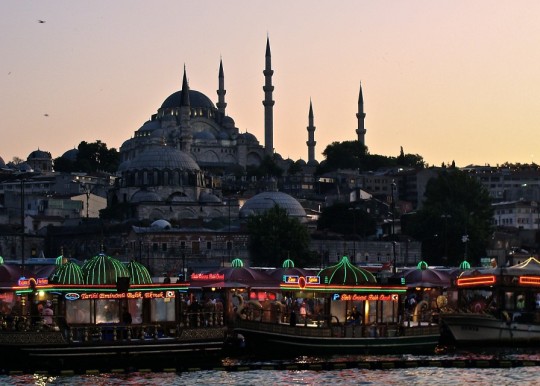
Rustem Pasha Mosque from the Galata Bridge. Bigger Mosque in the back is the Suleymaniye Mosque (Source).
History of Rustem Pasha Mosque
Rustem Pasha Mosque is built by the great Ottoman Artictech Mimar Sinan between 1550 and 1561. Construction order of the mosque given by the Rustem Pasha who was a Grand Vizier and son in law of the Ottoman Sultan Suleyman the Magnificent. Mimar Sinan also built the Sulmaniye Mosque which is very close to the Rustem Pasha Mosque. This mosque famous between Turkish citizens and tourists because of its Iznik (Nicea) tiles of the 16th century. Entire walls, mihrab, and mimbar of the mosque is all covered with these incredible tiles and they are still standing. Also, the mosque has one single minaret and a central dome with 4 more semi-domes. These domes are covered with 74 windows. Semi-domes and arches of the mosque are supporting by the octagonal columns. In Turkish these columns named "Fil Ayağı", elephant feet.

Interior of the mosque, main dome, and Iznik tiles (Source).
Renovations of the Mosque
Rustem Pasha Mosque was partly damaged at the Great Fire of 1666 and also 1776 earthquake. After two disasters, it quickly repaired and renovated by the Ottoman Sultans. Istanbul have lots of beautiful, exciting and big mosques but the Rustem Pasha Mosque should be on the top of that list despite its small size. As soon as you enter the mosque it's like entering another world. Incredible Iznik tiles, detailed architecture and feel of the spiritual life of Islam and Muslims.
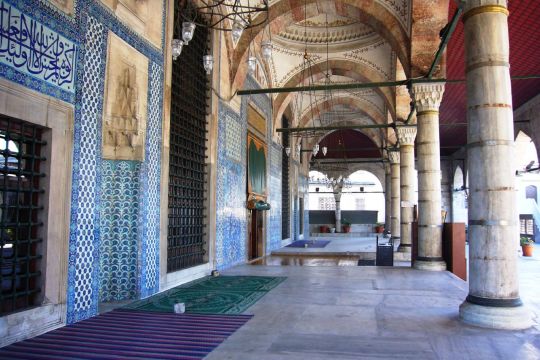
Iznik tiles will welcome you at the entrance (Source).
Where is Rustem Pasha Mosque?
As I told you before it is very close to the Eminonu side of the Galata Bridge. Even while you are walking from Karakoy to Eminonu through the Galata Bridge you can see the mosque. Because of its central location, it is very easy to go to the mosque. At first, you should go to the Eminonu, of course, it depends where will you go from to it.
How to Go to the Rustem Pasha Mosque from Sultanahmet?
The easiest way to take the T1 tram line from Sultanahmet station and get off at the Eminonu station, just 2 stations after. The mosque is just around 200 meters away from the tram station. But I'm strongly suggesting you take a walk from the Sultanahmet. Taking a walk will take around half an hour and 2 km but the route offers most of the historical legacy of Istanbul to you. While you are walking you can see the Firuz Aga Mosque, Nuruosmaniye Mosque, Historical Cuhaci Han, Grand Bazaar and many more other places.
How to Go to the Rustem Pasha Mosque from Taksim?
If you want to go to the mosque from Taksim you can take the historical metro which name is Tünel from Beyoglu. It is like a funicular system with one-stop. You can get off at the Karakoy, just another side of the Golden Horne. It is possible to take a T1 tram line from Karakoy Station and get off only after one station, at Eminonu. But it is always better to take a walk through the Galata Bridge. While you are walking you can see the many landmarks at the historical peninsula of Istanbul. Also, you can stop over the bridge and watch the people who are fishing. Don't forget to take pictures!
How to Go to the Rustem Pasha Mosque from Kadıköy and Uskudar?
You have one great option to go to the Eminonu from Kadıkoy and Uskudar. Just take a ferry from Kadıkoy or Uskudar pier and get off at the Eminonu. This is a classical Istanbul way to go to the Eminonu. While on the ferry don't forget to eat simit (a Turkish bagel) and dring tea. Feeding the seagulls with your simit is a traditional Turkish habit. After you get off at the Eminonu pier just take a 200 meters long walk to the mosque.
Rustem Pasha Mosque Opening Hours
Rustem Pasha Mosque is not a museum. It is an active religious place open to all people. It will be open in the morning prayer at the sunrise and will close after the night prayer. You can visit it any time during the day but also be aware that the entrance to the mosque will be restricted during the prayer. Generally, prayer will take no more than 20 minutes except only the Friday prayer. Fridays, at the noon there is a prayer and mosque will be crowded. It will take up to an hour. So you can eat a meal or drink coffee to spend some time to visit the mosque. Also, there is no entrance fee to the mosque but if you want to make some donations, it will be accepted by the officials. Probably one or two hours will be enough to visit the mosque and inspect the Iznik tiles in detail.
If you visited Rustem Pasha Mosque or planning to visit it please share your thought, questions, and suggestion at the comment section to help the others.
Read the full article
0 notes